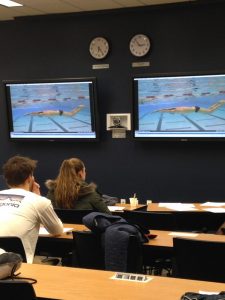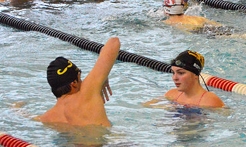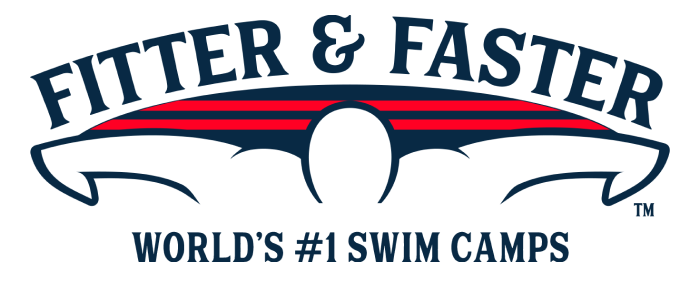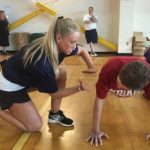About the Author: Chelsea White was a former USA Swimming Communications Intern. (Article re-printed with exclusive permission from USA Swimming)
Using Video as a Tool to Improve
When it comes to swimming at the national level, athletes know that they must spend a lot of time practicing in the water. Coaches and their staffs invest all of their expertise aiding the athletes in the hopes of improving the swimmer’s performance. And while the swimmers rely and trust in the coaching staff to be their critical eyes, here at the U.S. Olympic Training Center (OTC) in Colorado Springs, the USA Swimming National Team staff provides the unique experience for the swimmer to become his or her own coach.
The Olympic Training Center Experience
During the beginning of January 2014, the California Aquatics out of Berkeley, Calif., visited the OTC. Not only did the group include the likes of multiple collegiate swimmers from the University of California, but also Olympic gold medalists such as Nathan Adrian, Natalie Coughlin and Anthony Ervin were present. Aside from their rigorous training schedule that including wet and dry-land practice, the club also took advantage of video analysis sessions with USA Swimming High Performance Consultant, Russell Mark.
“Watching film and watching what the best swimmers do just is a great way to learn. The use of video is definitely one of the most valuable things that we have in swimming. Any time that we talk about sport, film, technique, or how to get better, I think that is always a good thing,” Mark said.

The idea behind the video sessions was for the swimmers to be able to see firsthand how the best of the best perform an action in the water. Seeing collected video footage allowed them to compare and contrast their own movements in the hopes of improving their technique in the pool.
“I think the beauty of having talks like these is that it allows the guys to A) see footage of what the best in the world are doing, and B) it allows them to then have a discussion about it. They then can discern whether they are doing things similar or if they are doing things differently to see what they need to improve on. And then I think from there they are able to take it right into the water and hopefully translate what they have seen and talked about,” said Cal assistant coach, Yuri Suguiyama.
The Power of a Collective Environment
And while the beneficial use of video is no secret, having the collective minds of experienced staff and Olympic athletes combined in one discussion makes for some great teaching moments.
“I have watched all of these clips before so I have my own thoughts, but I really love the collective environment. When you have 10 different people watching a piece of film, people see different things and ask questions that spawn different ideas. That is where the value is,” says Mark, who has 12 years of experience with USA Swimming.
Those different ideas trickle down from the collaboration of the swimmers themselves. The unique opportunity of seeing volumes upon volumes of video footage, while also having the ability to slow down the speed of the image for more thorough analysis transforms the swimmer from having an athlete’s mentality to a coach’s mentality.

“It just forces them and allows them to take a little bit more ownership in what they are doing. It is one thing for us as coaches to talk about certain things, but another thing when they can see it. The more that they can visualize in their minds what they need to be doing the better; it then puts the responsibility on themselves,” said Suguiyama.
The OTC offers state-of-the-art facilities for any athlete to use during their training sessions. What gives athletes the Olympic experience and competitive edge is the added benefits of technology and shared knowledge.
Suguiyama concluded, “It has been a great and very efficient trip.”







